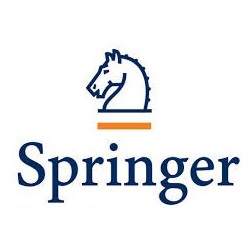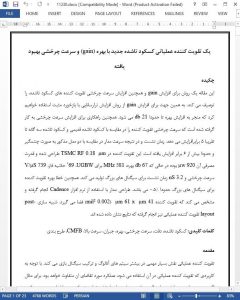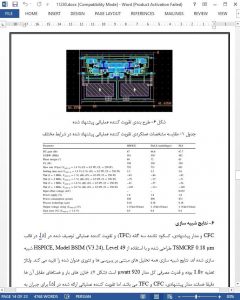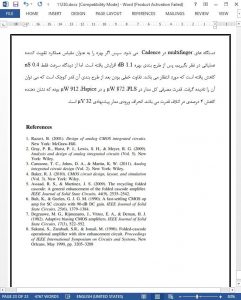Abstract
This paper describes a gain enhancement method and also a slew-rate enhancement scheme for folded-cascode amplifiers which uses positive feedback ? transconductance increaser method for the sake of gain increment that gives rise to approximately 21 db of increment in the amount of the gain. An approach for increasing the slewrate has also been employed which has increased the slewrate of the amplifier approximately 5 times the conventional folded-cascode one as well as the triple folded-cascode one. Also the settling time and consequently the speed of the circuit is improved remarkably i.e. over 6 times the conventional folded-cascode and triple folded cascode ones. The amplifier has been designed in TSMC RF 0.18 lm and consumes 920 lw of power meanwhile provides 67 db for gain, 581 MHz for UGBW, 69 for phase margin, 793 V/lS for slew-rate and 3.2 nS for large-signal settling time as well as the gain-error of the amplifier for largesignal is approximately 0.5 %. The layout of the circuit has also been carried out in Cadence and demonstrates that the op amp occupies 41 lm 9 61 lm (0.002 mil2 ) of the die area. The post-layout-simulation of the op amp was also fulfilled and the results are displayed.
1 Introduction
The operational amplifiers play a crucial role in most of the analog and mixed-signal systems. Depending on the application in which the op amp is employed, the demanding performance for it will be different. For example if the speed is critical while the gain error is not, a topology is chosen that favors the former, possibly sacrifices the latter. Also by scaling the cmos process technology down which consequently lowers the supply voltage, besides the low power demanding and the issues of short channel effects, providing a high gain, high speed, high output swing, etc. despite all of the above-mentioned limitations, asks for new circuit design techniques. Despite its rather medium performance, the folded-cascode topology, is used copiously in a wide range of applications such as those in analog to digital converter, filters, etc. The large signal settling time is the resultant of the UGBW of the amplifier besides the slew-rate of the amplifier and the input capacitances of the op amp also the overdrive recovery (slew-back) time which altogether determine the speed of an amplifier.
7 Conclusion
A gain-enhanced and slew-rate-enhanced folded-cascode amplifier was presented in which the cascode devices are used in order to provide additional signal currents at the output thereby increasing the gain of the amplifier, and the idea of dynamic-biasing has been used so as to increase the currents in slewing regime that increases the slew-rate of the amplifier to superior levels than the CFC and TFC do which in turn decreases the settling time hereby improving the speed of the op amp. The proposed scheme decrease the slew-back (over drive recovery) time as well. The total gain of the op amp is 67 db, the unity-gain-bandwidth is 581 MHz and the phase margin is 69 meantime it provides 793 V/lS for slew-rate and 3.2 nS for large-signal settling time.












عالی
پاسخکیف کردم.
سلام، وقت بخیر. خواهش می کنم نظر لطفتونه
پاسخ